![]()
It was nearly twenty years ago when I had written this. After one of my first photojournalistic assignments:
What does one photograph to depict a flood? A submerged house, a boat on a highway, people wading in water?
As we boated through the branches in Jinjira we found a wicker basket in a tree. The family had long since abandoned their home, and their worldly belongings, gathered in that basket, waited patiently for their homecoming.

Wicker basket in tree. Jinjira. 2nd September 1988. Dhaka Bangladesh. ? Shahidul Alam/Drik/MajorityWorld
The worst flood in a hundred years? That statistic is hardly relevant. They, as those before them and after them will always face the floods. How does it matter whether they are 60% starved or 75% starved? How does it matter what country the relief wheat comes from? They themselves are mere statistics to power hungry politicians.

The family still needed to be fed. When I went back the next day to this place in Jinjira, the water had risen another three feet. I never saw her again. 2nd September 1988. Dhaka Bangladesh. ? Shahidul Alam/Drik/MajorityWorld
What is relevant are the feelings that have been kindled, that half kilogram of rice that has been shared, that solitary dry house that has warmly welcomed all who have needed the shelter. That others have shared the pain.
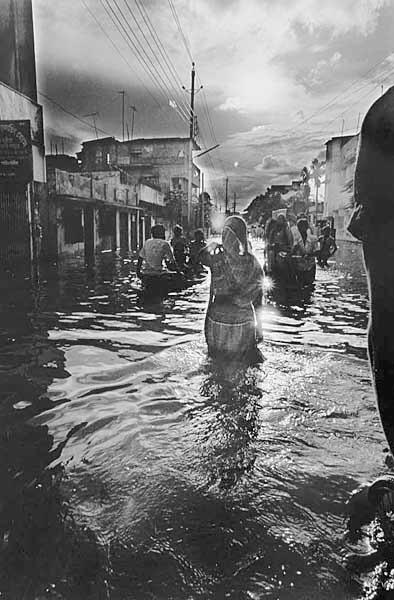
Wading down a street near Kamlapur railway station. “Dreamland Photographers”, the local studio, was still open for business. 2nd September 1988. Dhaka Bangladesh. ? Shahidul Alam/Drik/MajorityWorld
What is relevant is that now the roads are dry and the walls repainted and that a nation that once so cared has so quickly forgotten.
I look back and merely feel the ineffectuality of my images.
Shahidul Alam
Dhaka 1988
Nearly twenty years on, the floods are with us again. They are a part of our natural agricultural cycle. They irrigate the land, replenish the topsoil, remove the toxins. But deforestation in the mountains, illegal constructions, ill planned roads and ill caring leaders make floods take on a violent form. The waters get angry.
This year, when the waters had risen, our adviser advised that it was not yet a calamity. When the waters reached danger levels, the decree came that because of the state of emergency, ‘[political] banners were banned’ so while people struggled for food and shelter, banner rights became the issue. Now as the waters engulf the land and people flounder in need of relief, our adviser advises us ?we don?t have to help the people, they?re going to their relative?s house by themselves?.
Now that is a solution Bangladesh can offer to all the distressed people in the world. Just go find a relative.
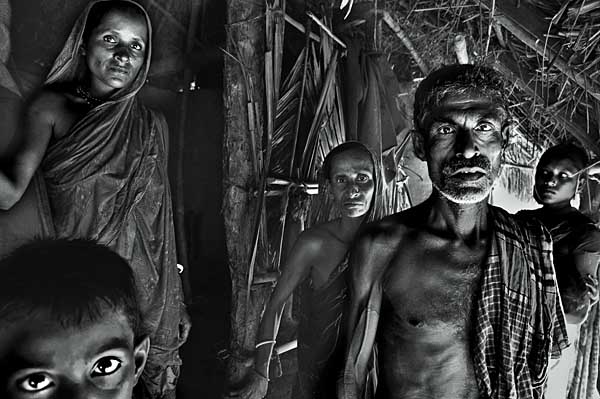
Before the floods. People affected by cyclone Akash. Mohishshoiri River. Khulna. 21 May 2007. ? Tanvir Ahmed/DrikNews
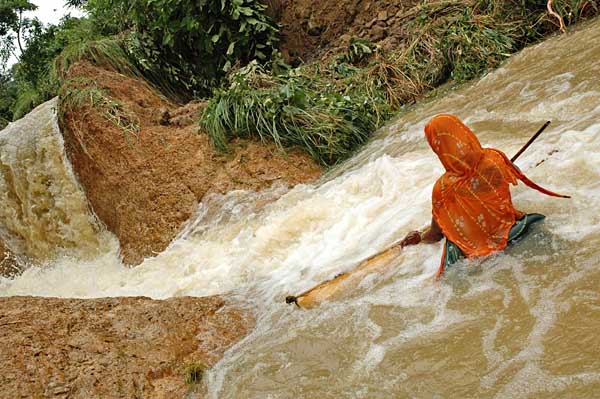
Woman fishes in the flood waters. 13 June 2007. Comilla Bangladesh. Kalim Shantu/DrikNews
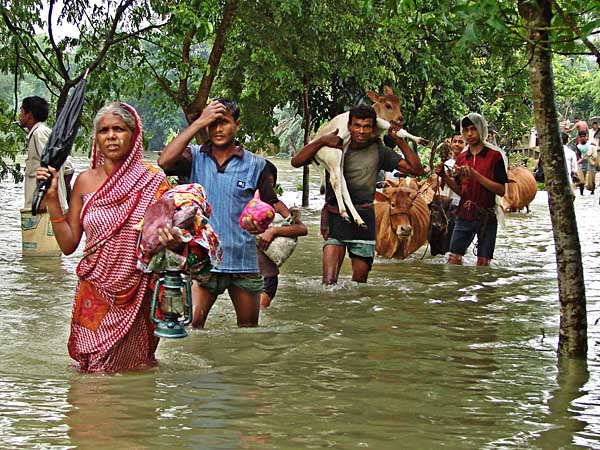
Twenty villages had been affected at the junction of the rivers Ghagot, Brahmaputra and Teesta making numerous people homeless. 31 July 2007. Gaibandha. Bangladesh ? Quddus Alam/DrikNews
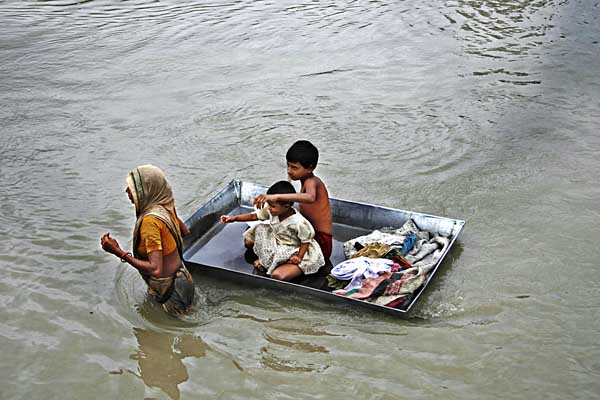
Woman in search of dry land. 30 July 2007. Sirajgonj Bangladesh ? Tanvir Ahmed/DrikNews
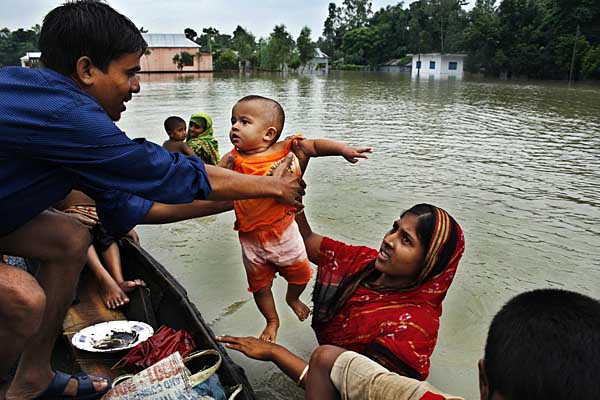
Villagers rescuing mother and child. 30 July 2007. Sirajgonj Bangladesh ? Tanvir Ahmed/DrikNews
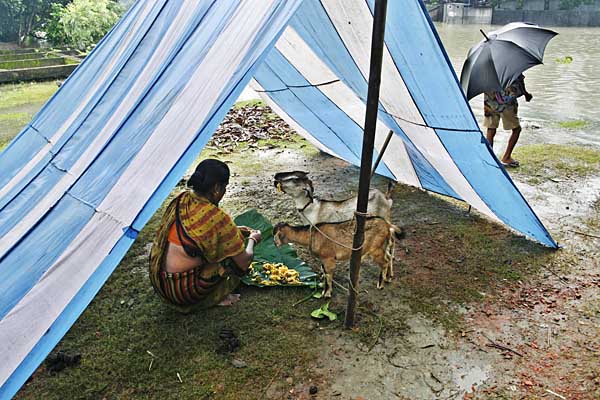
Woman feeding goats in makeshift tent. 30 July 2007. Sirajgonj Bangladesh ? Tanvir Ahmed/DrikNews
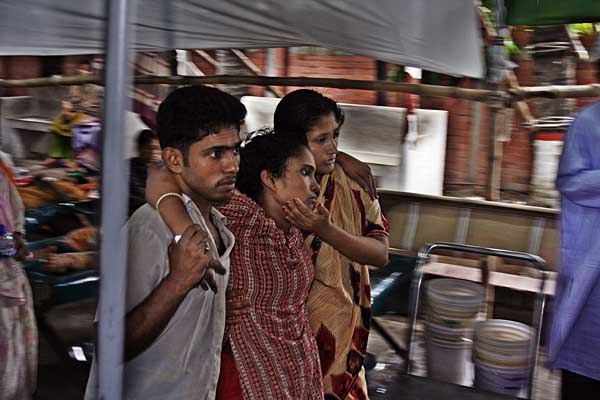
Diarrheal patients at hospital in Dhaka. 11 August 2007. Dhaka Bangladesh ? Munir uz Zaman/DrikNews
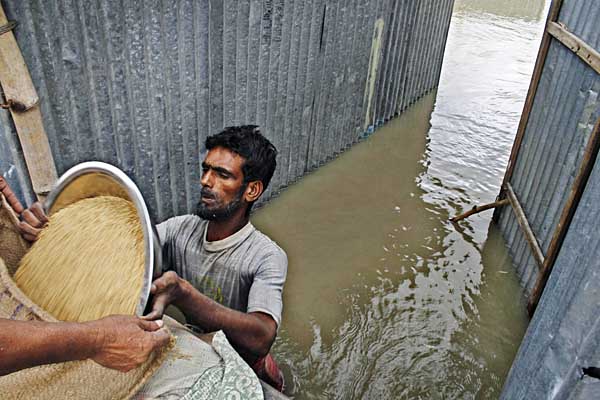
Spontaneous relief operations organised by citizen groups. 30 July 2007. Sirajgonj Bangladesh ? Tanvir Ahmed/DrikNews
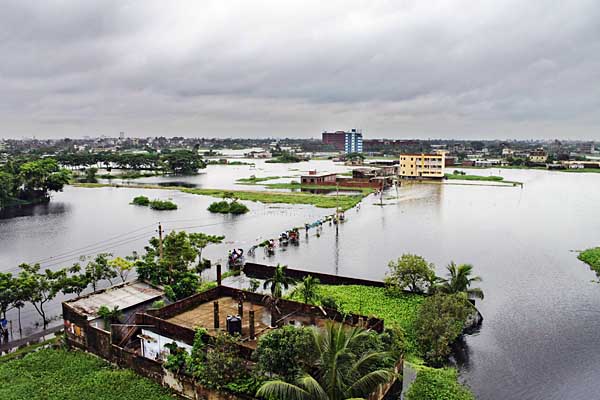
While one third of the country was flooded, people inside the DND (Dhaka Narayanganj Demra) embankment faced the stagnant water cause by rains. 25 July. Narayanganj Bangladesh ? Tanvir Ahmed/DrikNews
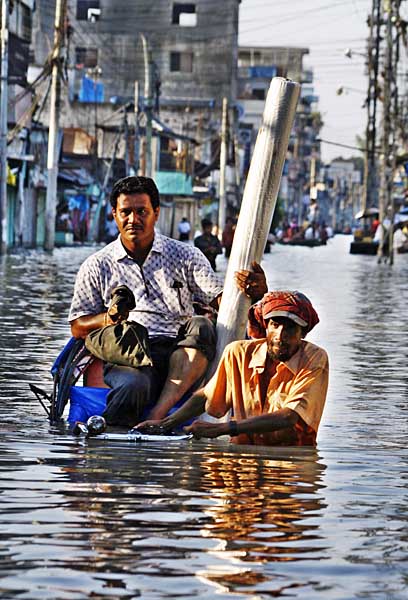
700,000 people were marooned in Sirajgonj. 64 people had already died when this photograph was taken. 5 August 2007. Sirajgonj Bangladesh ? Tanvir Ahmed/DrikNews
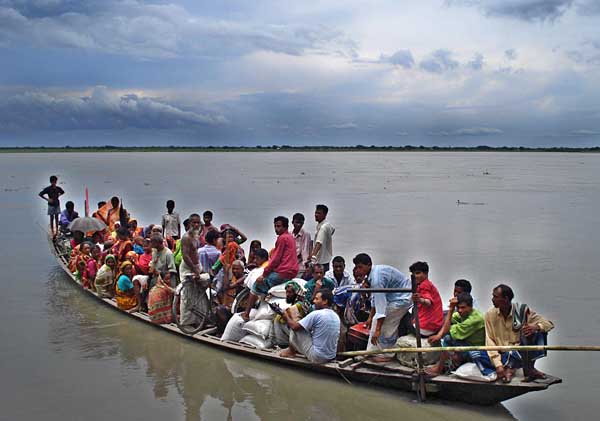
Boats are the only means of communication during floods. July 2 2007. Rangpur, Bangladesh. ? Ador Rahman/DrikNews
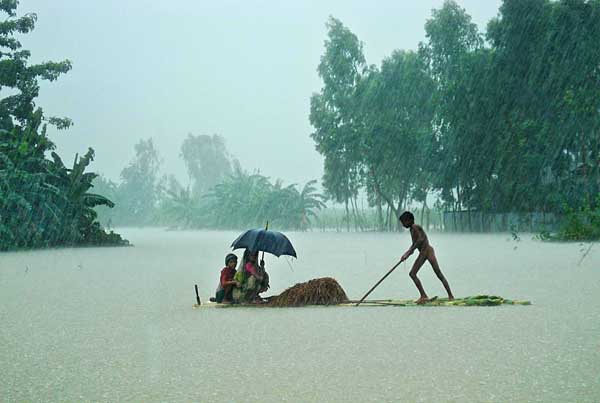
A family looks for shelter using a raft made of banana trees. 31 July 2007. Gaibandha Bangladesh ? Quddus Alam/DrikNews
And across the border, viewed from afar:
The Rains Reach Kolkata
When I was just a little boy, I watched the clouds advance
From rooftop high above the streets and bustle of Calcutta.
Up there, I watched the hawks soar high, and saw the palm fronds’ dance,
In wind that blew before the storm, and banged each window shutter.
It was in June, when summer’s heat had risen to its height,
That clouds approached, as though for war, advancing in a line,
Their heads held high, dark wall beneath — a fear-instilling sight,
With lightning streaks, and thunder-growls of warriors divine.
The sparrows, crows and pigeons fled, in haste to get away
And find refuge, as dust was blown from streets by gusts so strong
That palm trees bent, and tossed their heads, and back and forth did sway,
As leaves and clothes, and sailing fronds, with birds were swept along.
Then from the heat, we knew respite, as cool winds did descend
>From belly of the thunderhead, which bore a mist so fine,
With ions, whose electric charge did minds and bodies mend
And lift from summer somnolence like clear celestial wine.
And I would run and scramble down, from perch on highest roof,
To shelter in a doorway, where I still could watch the storm
Without myself being blown away, or struck by lightning hoof,
As racing clouds obscured the sky, like wraiths in equine form.
And then the dark, the greenish gloom, the flash more bright than sun,
The crack so loud it seemed the earth was cloven by the sky,
And pelting rain in slanting sheets, like bullets from a gun,
On roofs of tin, and wooden shades, and roll of thunder high!
And so the chariots of the gods would roll by overhead,
And we could hear the neighs and roars, and see the sparks that flew
As titans battled in the skies, by trumpet blowers led,
And sword of land pierced mail of sea, and blood of rain then drew.
And all the kids would venture out, unheeding of the scolds,
To jump with glee and leap and splash, in dance as old as time,
And yet as freshly bold that day, as in the eons old,
When sea would come to land to fight, and mate, in yearly rhyme.
Babui / Arjun Janah*
2007 August 11th, Sat.
Berkeley, California
*Arjun has an identity of his own, but for us photographers, he is the son of the legendary Indian photographer Sunil Janah.
Tag: health
Portraits of Commitment
Portraits of commitment
Why people become leaders in the AIDS response
Challenges help us find our true selves. They take us on a journey within the depths of who we are, leaving us at a destination we hope is worthy. Some people find themselves at lesser places.
AIDS is one of those challenges.
The South Asians in this book tell how AIDS has made them a better doctor, researcher, legislator, citizen or person. We know AIDS affects our daily life?but because of it we now have more respect for human rights and individual choice where once there was little or none. AIDS has helped us to see who we want to be.
Photographs by Shahidul Alam. Interviews by Karen Emmons. Commissioned by UNAIDS.
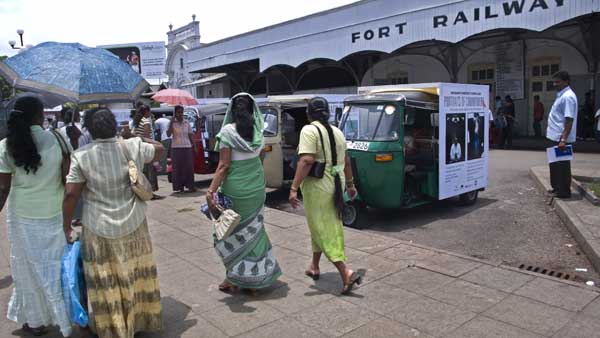
Viewers watching “Portaits of Commitment” at Fort Station in Colombo on the 21st August 2007, as part of ICAAP8. ? Shahidul Alam/Drik/MajorityWorld
A story from Sri Lanka on WAD: Positive & Strong Princey Mangalika on HIV/AIDS
Reviews: IPS. Daily Mirror

Shilpa Shetty. Actress, Big Brother Winner. Mumbai India. “Being a celebrity has advantages – people hear you. I thought I should make use of this position and speak out.” ? Shahidul Alam/Drik/MajorityWorld
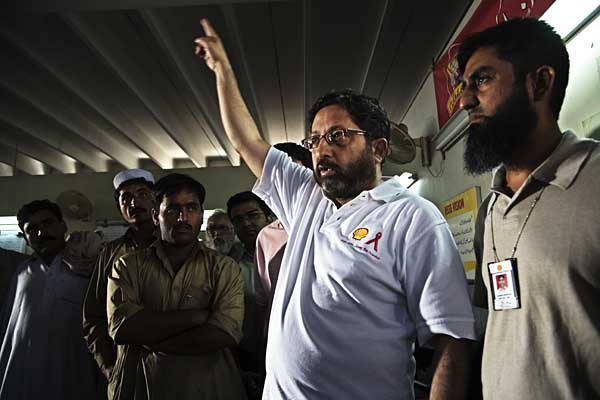
Tahir Baig Barlas. Corporate Manager. Karachi Pakistan. “We have the opportunity to do something now before it’s too late. Let’s not be reactive.” ? Shahidul Alam/Drik/MajorityWorld
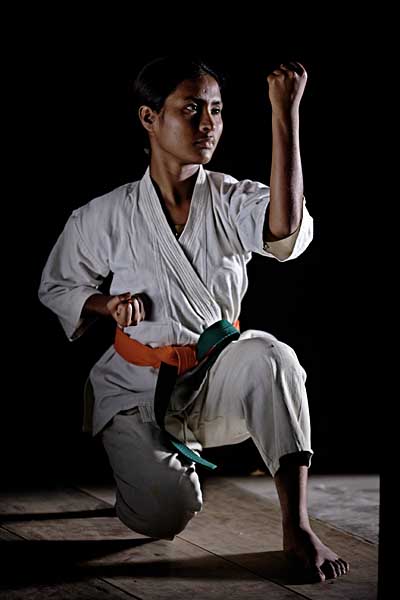
Sabina “Putul” Yeasmin, Daughter of a sex worker. Tangail Bangladesh. “I gave wrong information to make others afraid, as I had been. I had to go back and give correct information.” ? Shahidul Alam/Drik/MajorityWorld
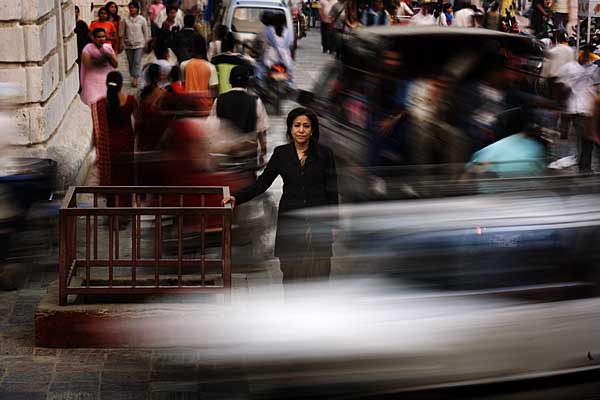
Sapana Pradham-Malla. Advocate. Kathmandu Nepal. “I can’t turn away.” ? Shahidul Alam/Drik/MajorityWorld
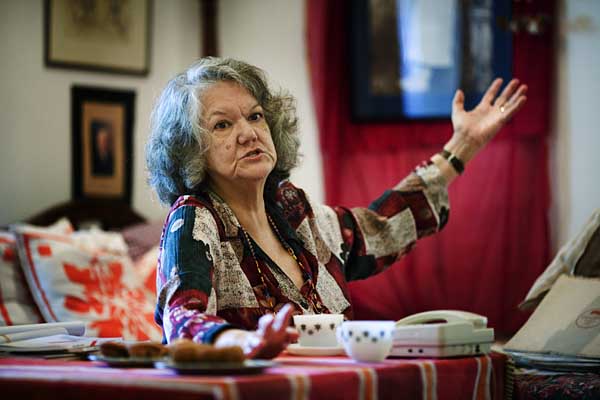
Sally Hulugalle. Community Worker. Colombo Sri Lanka. “I want a better deal for those who are voiceless.” ? Shahidul Alam/Drik/MajorityWorld
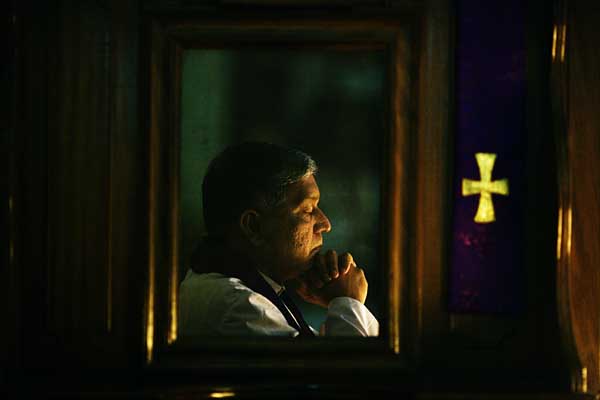
Rev. Alex Vadakumthala. Priest. New Delhi India. “The church finds its meaning when it responds to the challenges of the times.” ? Shahidul Alam/Drik/MajorityWorld
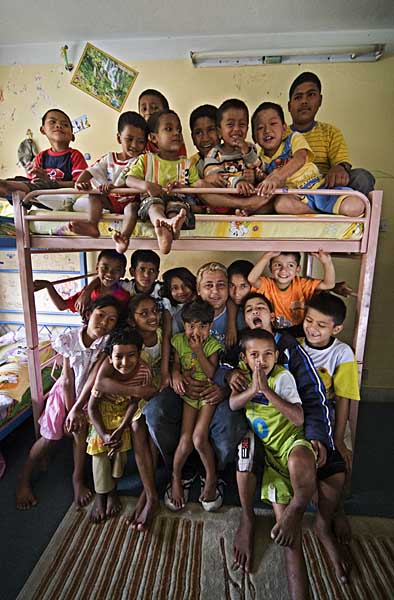
Rajiv Kafle. Former Drug User. Kathmandu Nepal. “I saw a need and an opportunity where I could step up and really make a difference.” ? Shahidul Alam/Drik/MajorityWorld
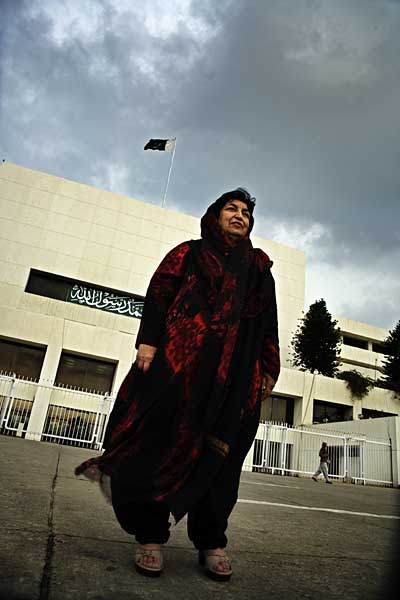
Noor jehan Penazai. Partliamentarian. Islamabad Pakistan. “These politicians have to realise it’s a very serious disease and we have to talk about it.” ? Shahidul Alam/Drik/MajorityWorld
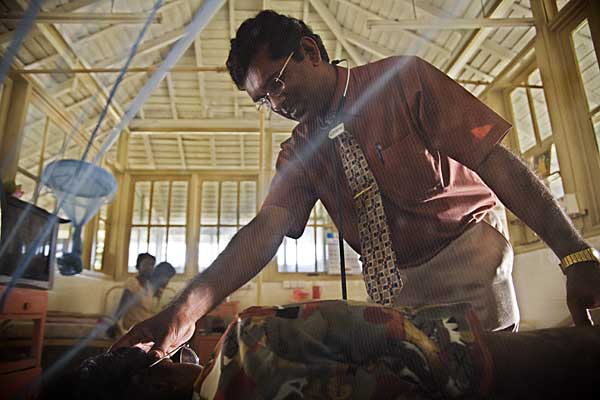
Dr. Ananda Wijewickrama. Doctor. Colombo Sri Lanka. “I had to do something for the patients …they needed a place to go, to be consoled and, if dying, to die with dignity.” ? Shahidul Alam/Drik/MajorityWorld
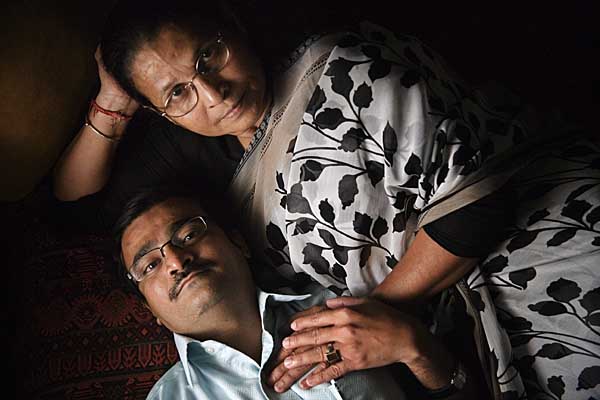
Arif Jafar and Anis Fatima, MSM and mother. Lucknow India. “I am grateful to Allah he gave such a son to me.” ? Shahidul Alam/Drik/MajorityWorld
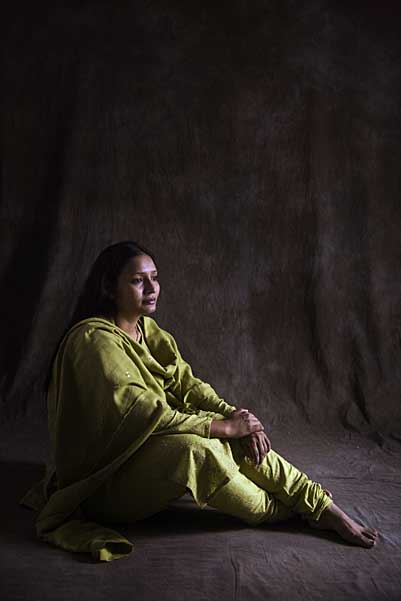
Habiba Akter. Dhaka Bangladesh. Positive Counsellor.
“I have no choice. If I don’t do it no one will.” ? Shahidul Alam/Drik/MajorityWorld
An exhibition supporting the book opens at the Barefoot Gallery, in Colombo at 7:00 pm on the 18th August. 704 Galle Rd. Colombo 3.
On One Eid Day
Dr A.K.M. Abdus Samad, the director of the mental hospital in Hemayetpur, Pabna, was pragmatic. “An average of 2% of all populations are schizophrenic, and of course there are many other mental ailments. In this country of 130 million, we have one hospital with 400 beds. What do you expect? The government allocation for food is 18 Taka per day (about 45 US cents when we met in 1993). Many mental patients are hyperactive and need more food. A good portion of that 18 Taka goes to the contractor, the remainder has to provide three meals a day. So what can I do? I make sure they get plenty of rice. That way they at least have a full stomach. We have little money for drugs, and virtually no staff for counselling, so we keep them doped. Then they don’t suffer as much.”
The other doctors had a different take. “Pity you’ve come on a Friday they said. On a weekday we could have shown you an electric shock treatment.” It seemed to be a popular ‘treatment’. To the uninitiated like me, the violent convulsions and the near comatose state the patients lay in afterwards didn’t seem to be the way to treat anyone. The care givers differed. The treatment was generally given to suicidal patients they said, and the way they saw it, it was “better than letting them kill themselves.” I didn’t have much of an argument against that one.
I saw the group of visitors come round to the dorms at night and peep through the windows. It was well after visiting hours, but they had paid to get in and have a look at the ‘pagols’ (loonies). On Eid day, many would dress up and come to the peep show. Some patients did get visitors on Eid, a select few even got new clothes or special food, but for most, it was another day of waiting. Another day of hoping that someone close might come and take them away.
In every ward I went, someone would take me aside, and slip a note in my hand. Invariably, scrawled in that note would be an address. “You must take it to them (their relatives). Tell them I’m OK. Tell them to take me away from here.” The first few times I did try and contact those relatives. Some addresses had people who recognised them, most didn’t. None seemed keen on responding. Eventually I gave up, but I would still take the notes. In Hemayetpur, even false hope seemed something worth giving.
—————————-
As another Eid approaches, I remember the child Shoeb Faruquee had photographed in Chittagong. It won him an award at World Press Photo, but I wonder where the child is now.
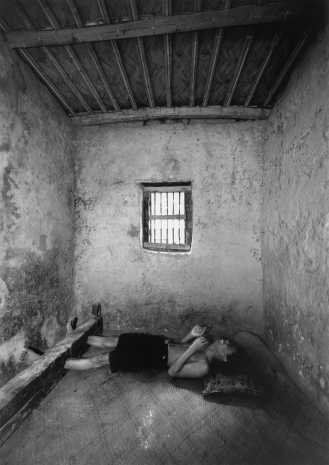
Patient at mental hospital, Bangladesh
? Shoeb Faruquee, Bangladesh, Drik/Majority World
Mohammad Moinuddin had yet another story to tell:
http://www.newint.org/columns/exposure/2006/08/01/md-main-uddin/
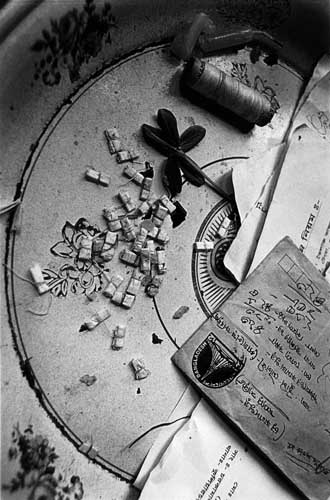 ? Md. Mainuddin, Bangladesh, Drik/Majority World
? Md. Mainuddin, Bangladesh, Drik/Majority World
I was on an assignment at Domra Kanda, an asylum for the mentally ill in Kishoreganj, Bangladesh, where the only medications provided are these ?medallions? filled with spiritual spells and ?blessed water? from traditional spiritual healers. Illiteracy about medical treatments ? particularly those related to mental health issues ? misconceptions and limited health facilities mean that many parents resort to their faith in such medallions and other blessings from spiritual healers. The clinics which provide such traditional solutions do not offer scientific medications of any type and neither are they approved by any health authority. But for many Bangladeshis, faith in traditional healers and their treatments is more powerful, effective and easily available than scientific medication. The parents strongly believe that it is their faith in such spirituality that will cure their child and bring back the long lost peace and happiness to their family.
———————————————————————————————————————————————————
In a world where normality is a virtue, I salute the few individuals who have chosen to be different.
Shahidul Alam
23rd October 2006. Dhaka
ps: Apologies to ZAK on my spelling of Eid: http://www.kidvai.com/zak/2005/11/its-that-time-of-year-again.html
